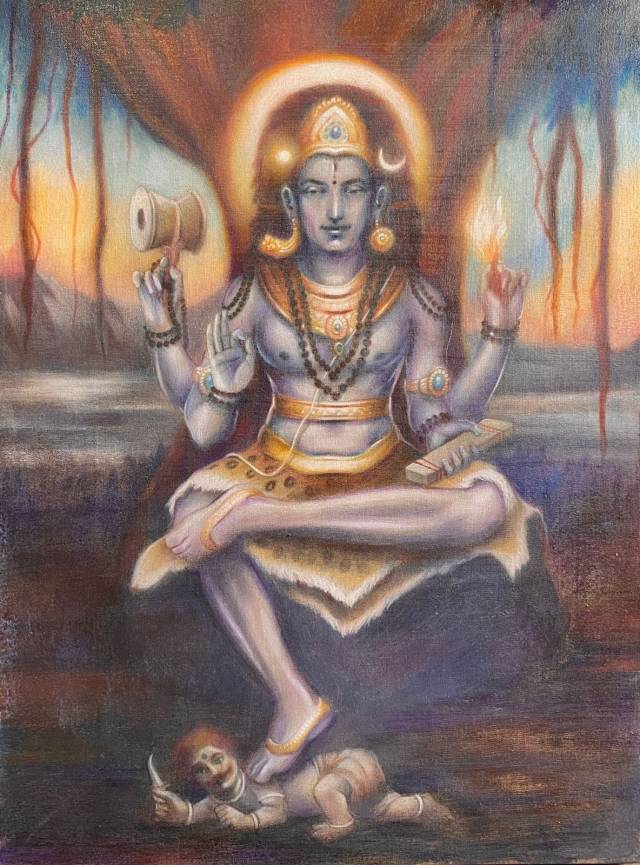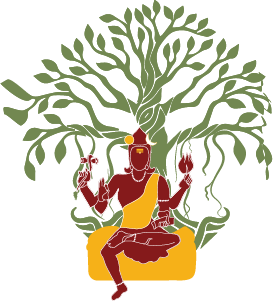Live Courses, Classes and Camps
Vedanta Camp in Arsha Vidya Gurukulam, Coimbatore
By Swami Brahmavidananda and Swamini Brahmaprajnananda

19th January, Monday to 24th January, Saturday 2026
We are very happy to invite you to our Vedanta camp in Anaikatti, a temple of learning where our beloved Guru, Pujya Swamiji taught long term courses with the blessings of Sri Medha Dakshinamurti.
Vedanta and Personal Growth – The classes will unfold Vedanta’s vision whiletouching on a student’s preparedness or adhikaritvam. The texts will be provided to you.
Schedule – The schedule will be intense and relaxed with pujas in the temple (for timings see below), meditation, 4 classes and Satsang.
Arrival and Departure – Participants are expected to arrive by 18th January 2026, Sunday afternoon or evening and depart by 25th January, Sunday morning/afternoon. Anyone staying for longer will require special permission. Please write to us at (vedantacamps@gmail.com).
Contribution – Rs 6500 (This is for the duration of the entire camp and will cover your stay and all meals).
Your contribution is to be transferred to the bank account of Aarsha Vidya Foundation.
ICICI bank
Account Name – Aarsha Vidya Foundation
SB Account No: 000401143148
IFSC Code -ICIC0000004
For participants travelling from overseas, please pay in cash on the first day of the camp.
Registration is on first come first served basis. Please fill up the form below.
The last date of registration is 5th January 2026 or by when all seats are filled.
Frequently Asked Questions (FAQs)
(From the gurukulam website – https://arshavidya.in/faq/
To find out more about Arsha Vidya Gurukulam – https://arshavidya.in/gurukulam/
Q. How do I get there?
The Gurukulam is about 25 km from Coimbatore City. Taxis charge around Rs.1000 to Rs.1200 for a ride to the Gurukulam from the Bus stand and Railway Station. A trip from the Airport will cost about Rs.1500/-. There are buses from Gandhipuram Town bus stand to Anaikatti which start plying very early in the morning – first bus at about 4:30 AM. You may request a ticket to ASHRAM at Anaikatti, the bus stop is very close to the main gate. You can also request for a taxi through Request a Taxi page.
Q. Where do I collect room keys on arrival?
Room keys can be collected from Reception upon arrival during office hours (9:00 AM – 5:00 PM). If you plan to arrive earlier than 9:00 AM or after 5:00 PM, please inform the office in advance (+91-0422-2657001) so they may leave your keys with the security guard at the Main gate. Upon arrival, you can collect the keys from him. If you are unfamiliar with the location of the room allotted, please ask the security guard/reception for help/directions.
Q. What are the basic facilities at the Gurukulam?
The accommodation will be simple with bed, sheets and blanket. Guests are expected to bring their own toiletries, towel etc.
The facilities of the gurukulam are well spread out across a wide area especially the accommodation, dining hall and lecture hall. Hence, participants have to be prepared to walk around quite a bit with comfortable footwear.
Temple: The Daksinamurti temple pujas are done early morning from about 5:30AM and evening starting at 6:00PM. Food: A bell rings at the time of Breakfast (8:00 AM) , Lunch (12:45PM) and dinner (7:15 PM) and Tea. There is early morning Tea at about 5:30 AM, Mid morning Tea at 11:00 AM and evening tea at 3:30 PM. Drinking water (Reverse Osmosis treated)
is available in the dining hall and lecture hall and office. Most people bring a bottle and fill it up as needed.
Mobile network: The only mobile phone network which functions reasonably well at the Gurukulam is BSNL – you may not get a signal for other mobile networks. Limited wifi for a few hours may be provided to the camp participants. There are no shops in the immediate vicinity of the Gurukulam – so please bring with you anything which you need as soon as you arrive.
Q. What should I plan to bring when I come for a visit?
Blankets, linens are supplied by the Gurukulam. The following items may be useful during your stay:
• Flashlight: The Gurukulam is in a forest and therefore a good flashlight (Torch) will be very handy at night
• Insect repellent
• Sun screen – If one has the skin sensitive to the tropical Sun, a sunscreen
can help in Summer – Highs in Summer can approach 40 degree Celsius.
• Chappals (Sandals)
• Walking/Running shoes
• Umbrella
Q. Is there a Dress Code in the Gurukulam?
There is no formal dress code. Modest attire, comfortable loose clothing suitable for sitting for long periods would be suitable. Jeans and Shorts are better avoided.
Q. What is the climate like in the Gurukulam?
You may check the climate of Anaikatti which is 5 km from the Gurukulam. The Gurukulam being in a very green area, 25 km from the city, the Gurukulam is usually a few degrees cooler than Coimbatore city.
Q. Are there laundry facilities?
The Gurukulam will arrange for a person who will take care of the laundry at a nominal cost for the participants and will be available from 9.00 am to 5.00 pm during the retreat.
Money Matters
Q. Are foreign currencies accepted at the Gurukulam?
Acceptance of donations in Foreign currency at the Gurukulam is restricted to US Dollars, British Pounds and Euros only. Please note that the Gurukulam does not offer a money changing facility Please note that there is no ATM nearby the Gurukulam at this time. Please arrange for your money requirements including donations in advance of coming to the gurukulam.
For any other queries please write to vedantacamps@gmail.com
Form to Register
Shivanandalahari – Waves of Ananda that is Shiva

A 25-Session Journey into Adi Shankaracharya ‘s Devotional Masterpiece of 100 verses.
Starting 5th January, Monday 2026
and all Mondays till 29th June 2026
7 – 8 pm IST (Zoom)
Join me in this sadhana where wisdom and devotion flow in Shivananda—the Ananda that is Shiva, your own true nature.
Discover the heart of Advaita Vedānta through one of Adi Shankaracharya ‘s most beautiful devotional compositions.
Shivanandalaharī (Waves of Fullness that is Shiva) allows non-dual wisdom flow naturally into waves of bhakti.
This exquisite stotra of 100 verses is a spiritual sadhana to be lived.
Each verse is a doorway—inviting us to recognise Bhagavan Shiva not as distant but as our own innermost Self, the infinite ānanda that we seek in every experience.
For details and registration – Click Here
The Bhagavad Gita Course with Swamini Brahmaprajnananda

Saturdays, 4:00 pm IST
Journey Through Life’s Battlefield:
Although a dialogue between Arjuna and Krishna in the middle of the Mahabharata war, the Bhagavad Gita is really a profound flow of meaning between jiva, the individual and Bhagavan about the battlefield of life.
We battle with ourselves and the world desperately seeking answers to these questions – How can I have work-life balance? How can I manage my mind?
For centuries, seekers have found solace and wisdom in the Gita’s teachings. Now, amidst the complexities of modern life, its wisdom is more relevant than ever.
The Bhagavad Gita (The Lord’s song) can truly bless those who seek.
Vedānta Sāra (The Essence of Vedānta)

Saturdays, 7:00 pm IST
Vedānta Sāra is a complete text with 227 verses that unfolds:
• The nature of the human problem,
• The qualifications for the study and sādhanā of Vedānta,
• The problem of Adhyāsa, projection on the Ātmā and its negation,
• Steps and Sādhanā for gaining the truth,
• Characteristics of a Jivanmukta.
Eligible people are those who have exposure to the Bhagavad Gita (at least 2-4 chapters).
Interested people may write to info@arshavidyananda.in
Dakṣiṇāmūrti Stotra (with Mānasollāsa)

Thursdays, 7 – 8 pm IST
Dakṣiṇāmūrti Stotra is a deeply revered stotra and a great poem in world literature by Ādi Śaṅkarācārya. In just ten verses it reveals the complete vision of Advaita while offering Namaḥ to Ādi Guru – Shiva, the guru of all gurus – Dakṣiṇāmūrti.
Sureśvarācārya, his disciple has written a vārttika of almost 350 verses on this stotra called Mānasollāsa, ‘that which exhilarates the mind’.
Dakṣiṇāmūrti Stotra uniquely combines a deep, abiding love for Bhagavān and a sharp refutation of alternative views to Advaita. All Arsha Vidya ashrams have an altar of Sri Dakṣiṇāmūrti whose grace we seek for timeless wisdom. This class began on 10th July 2025.
For this new class, eligible people are those who have exposure to the Bhagavad Gītā (at least 2 chapters) or to atleast one Prakaraṇa Grantha or Upanishad.
Those keen to learn may write to info@arshavidyananda.in
Chāndogya Upanishad

Sundays, 4 pm IST
The mahāvākya ‘Tat tvam asi‘ occurs in this illuminating dialogue between the teacher Uddalaka and his young son Svetaketu. This class began on 10th August 2025.
This is an ongoing Upanishad class. Eligible students are those who have completed atleast a few chapters of the Gita or some Prakaraṇa Grantha or some Upanishad.
To join please write to info@arshavidyananda.in
Stotram Chanting

To be able to pray is a huge privilege. And all of us (irrespective of our gender, class, nationality differences) have been blessed with this privilege to pray.
A prayer is centred on a self conscious and self-judging person relating to an altar. The mode employed by the person praying is never the same – it differs from person to person. Even for a given person it differs from time to time. A prayer can be a simple mental or oral chant or a strict elaborate vedic ritual.
There are three different forms of karma, action, in prayer: kāyikam, physical, vācika, oral and mānasam, mental. Performing a ritual is a physical form of prayer. Singing praises of Bhagavān is an oral form of a prayer while chanting a mantra silently is a mental prayer.
Puja


